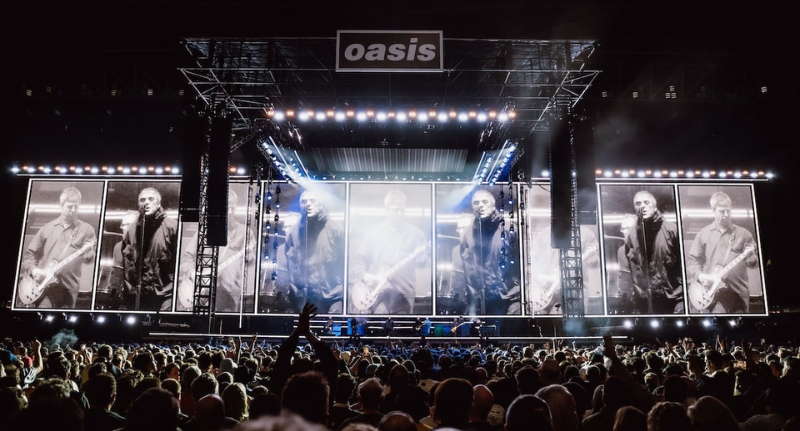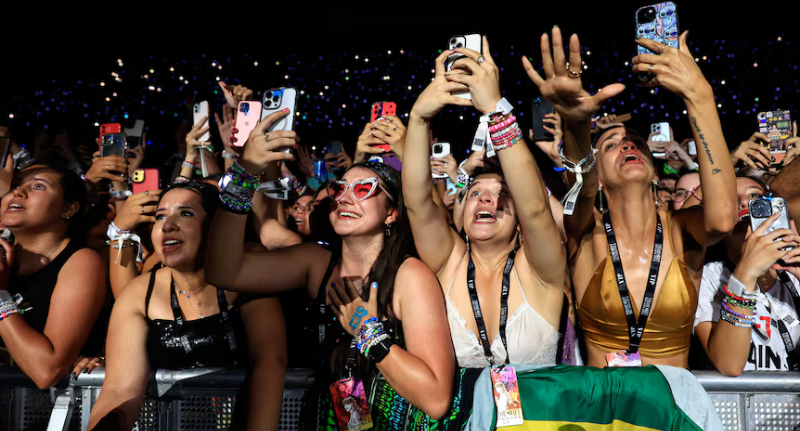In a culture obsessed with digital perfection, brands are turning to music to reconnect with something real.
From Metallica drumming up blood donations to Oasis reviving tracksuits for a reunion tour, the new wave of brand-band collaborations hits harder than any standard campaign.
Jenna Russell, executive strategy director at Enigma, said band partnerships “hit different” in a world overflowing with synthetic perfection.
“By partnering with bands, brands aren’t just tapping nostalgia; they’re staging a quiet rebellion against the artificial. Infusing themselves into culture with emotion, grit and a distinctly human pulse,” she said.
“These collabs resonate so deeply because music lives in our memories and our bones. It’s personal, communal, and unfiltered in a way no algorithm can mimic.”
Metallica recently partnered with Australian Red Cross Lifeblood to encourage people to donate blood or plasma.
As part of the initiative, fans who rolled up their sleeves received a limited-edition T-shirt featuring the lyric ‘A sea of hearts beat as one’ inside a blood drop.
Jeremy Weiss, chief marketing officer at Lifeblood, said the partnership felt so authentic because it came directly from the band.
“Metallica wanted to use their Australian tour to do good, not just promote – and that intent shaped everything,” he told Mediaweek.
“The creative was led by their designer, the tees were unlocked only by donating blood and the message came from the band’s voice, not a marketing script. That’s why it resonated.
“When artists lead and brands support, you get credibility and cultural meaning, not just borrowed fame.”

Merch with meaning
Adidas Originals partnered with Britpop icons Oasis on a 26-piece collection which landed in stores ahead of the band’s highly anticipated reunion tour.
The drop included tour branded tracksuits, oversized crews, bucket hats and three-stripe tees.
Ben Walker, chief doer at Those That Do, said the most successful collaborations feel like they were born backstage, not in a boardroom.
“As someone who proudly wore head to toe the Adidas x Oasis collection amongst a sea of others at the concert last week, I think brands are turning to music again because culture’s craving authentic energy,” he said.
“Unlike influencer tie-ups, music partnerships tap into whole tribes of fans who already live and breathe the brand’s spirit.”

Laura Mulcahy, head of cultural practice at TRA, described the collaboration as a “no-brainer”.
“The brand was a billboard for the sportswear giant in the 90s – the Gallagher brothers and the three stripes were synonymous with Britpop and the streetwear of northern England,” she said.
“First time round it was fashion. Second time round – band merch available on the tour website. This juxtaposition reflects just how normalised brand collaborations have become in today’s culture.”
Mulcahy said the wider shift in music-brand partnerships reflects changing norms.
“Once a brand collaboration or sponsorship might have been considered a ‘sell-out’ for hardcore musicians,” she said.
“In a cost-of-living crisis, musicians are getting squeezed just like the rest of us – we’re just more comfortable with bands cashing in with brands.
“If a musician is cashing in, you might as well make it a good one. That seems to be the underlying rule for most modern brand collaborations. It comes down to the creative being given more rope. Brands need artists to raise their cultural capital, not the other way around as it once may have been.”
Striking the right note
James Cowie, group creative partner at DDB Melbourne, questioned whether the Adidas and Oasis partnership was groundbreaking or simply another iteration of the same old playbook.
“In 1986 Run DMC signed a $US1.6 million deal with Adidas and even had a banger called ‘My Adidas’ on Raising Hell,” he said.
Cowie added that the most impactful collaborations become cultural moments rather than just marketing stunts.
“It’s hard to go past the Pepsi half-time show,” he said.
“Just think of the musical acts that have performed over the years in that carefully curated branded moment.”
Rhian Mason, managing partner of M+C Saatchi’s Passion and PR, believes brands are chasing emotional equity, not just visibility.
“The best collabs feel like co-creation; the worst, like karaoke,” she said.
“No one’s riding the wave better than KATSEYE, the K-Pop group partnering with everyone from Gap and Lush to Pandora, Fendi, Glossier, Coach and Monster High – turning their debut moment into a full-blown fandom economy.”
Rewriting the playbook
Industry insiders connecting authentically with consumers through their interests is an important playbook for brands.
Eb Yusuf, general manager of strategy, culture and insights at Yango, agrees.
She said music partnerships reach hard-to-reach audiences through shared values, and the best go beyond sponsorship.
“Coldplay’s partnership with BMW to use their recyclable i3 batteries to power their concerts is a prime example. It’s a functional, authentic collaboration supporting their shared sustainability mission,” she said.
“The brand stops being an interruption and instead provides genuine, integrated value to the artist and the fan community.”

Tanvi Singh, head of strategy and planning at The Media Store, said brands are increasingly turning to band collaborations to reintroduce real emotion, texture and imperfections
“Brands often risk becoming too polished, too synthetic,” she said.
“Music is one of the few sensory experiences that still cuts through the digital haze and imprints our memories.”
Singh believes the collaborations move beyond selling a product line and venture into connections and nostalgia.
“In the age of visual overload, digital avatars and algorithms, aligning with musicians allows brands to collapse the distance between digital fantasy and human experience,” she added.
Phil McDonald, CEO of BCM Group, said the new era of brand partnerships is about creating worlds audiences want to experience.
“The way brands need to show up in today’s completely fractured media landscape means they now have to go well beyond creative campaign structures,” he said.
However, he cautioned against jumping into surface level partnerships.
“Think strategically and creatively about the collaboration and how it can help your brand,” he said.
“Start building a world of content that is relevant to what you sell and what your buyers want.”

